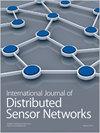Cross-domain entity identity association analysis and prediction based on representation learning
IF 2.5
4区 计算机科学
Q3 COMPUTER SCIENCE, INFORMATION SYSTEMS
International Journal of Distributed Sensor Networks
Pub Date : 2022-11-01
DOI:10.1177/15501329221135060
引用次数: 0
Abstract
Cross-domain identity association of network entities is a significant research challenge and a vital issue of practical value in relationship discovery and service recommendation between things in the Internet of things, cyberspace resources surveying mapping, threat tracking, and intelligent recommendation. This task usually adds additional difficulty to the research in practical applications due to the need to link across multiple platforms. The existing entity identity association methods in cross-domain networks mainly use the attribute information, generated content, and network structure information of network user entities but do not fully use the inherent strong positioning characteristics of active nodes in the network. In this article, we analyzed the structural characteristics of existing relational networks. We found that the hub node has the role of identity association positioning, and the importance of identity association reflected by different nodes is different. Moreover, we creatively designed a network representation learning method. We proposed a supervised learning identity association model combined with a representation learning method. Experiments on the public data set show that using the identity association method proposed in this article, the ranking accuracy of user entity association similarity is about 30% and 25% higher than the existing two typical methods.基于表示学习的跨领域实体身份关联分析与预测
网络实体的跨域身份关联是物联网中物间关系发现和服务推荐、网络空间资源测绘、威胁跟踪、智能推荐等方面的重要研究课题和重要应用价值。由于该任务需要跨多个平台的链接,通常会给实际应用中的研究增加额外的难度。现有的跨域网络实体身份关联方法主要利用网络用户实体的属性信息、生成内容和网络结构信息,没有充分利用网络中活动节点固有的强定位特性。在本文中,我们分析了现有关系网络的结构特征。我们发现枢纽节点具有身份关联定位的作用,不同节点所反映的身份关联重要性不同。此外,我们创造性地设计了一种网络表示学习方法。提出了一种结合表征学习方法的监督学习身份关联模型。在公共数据集上的实验表明,使用本文提出的身份关联方法,用户实体关联相似度的排序准确率比现有两种典型方法分别提高了30%和25%左右。
本文章由计算机程序翻译,如有差异,请以英文原文为准。
求助全文
约1分钟内获得全文
求助全文
来源期刊
CiteScore
6.50
自引率
4.30%
发文量
94
审稿时长
3.6 months
期刊介绍:
International Journal of Distributed Sensor Networks (IJDSN) is a JCR ranked, peer-reviewed, open access journal that focuses on applied research and applications of sensor networks. The goal of this journal is to provide a forum for the publication of important research contributions in developing high performance computing solutions to problems arising from the complexities of these sensor network systems. Articles highlight advances in uses of sensor network systems for solving computational tasks in manufacturing, engineering and environmental systems.

 求助内容:
求助内容: 应助结果提醒方式:
应助结果提醒方式:


